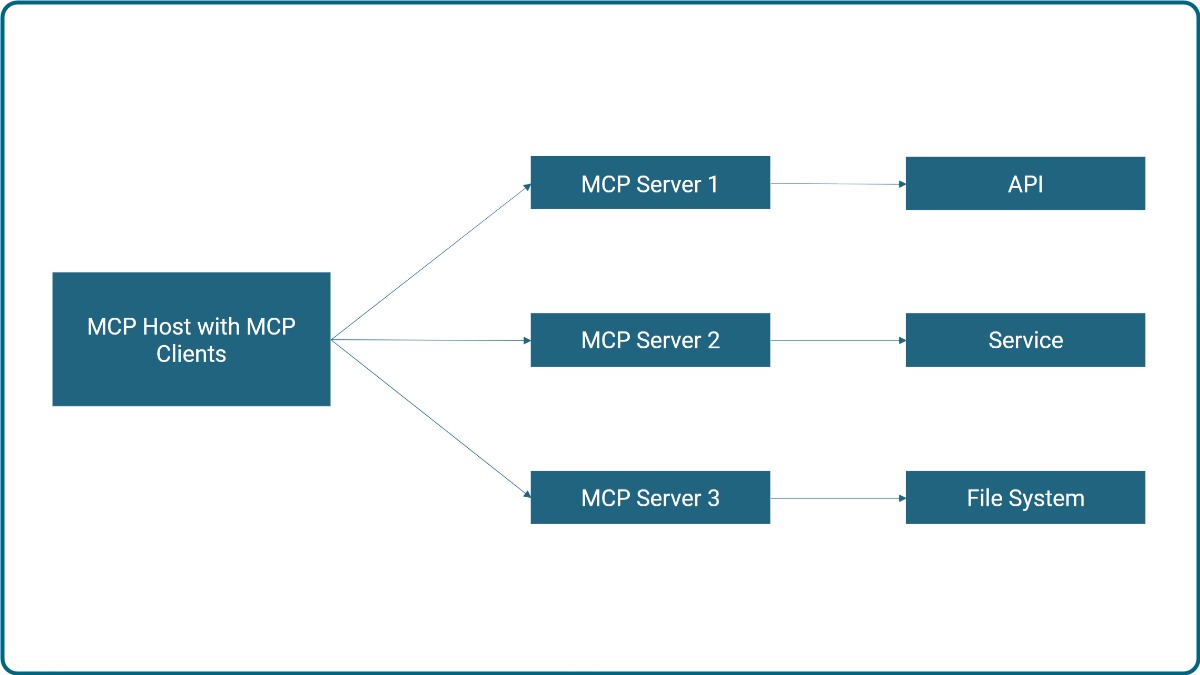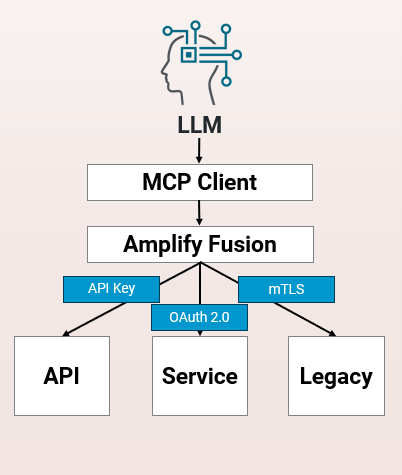The Next Step for AI: From Chat to Action
In the world of AI and LLMs, there is a growing need to interact with systems. This goes beyond using a chatbot to respond to a prompt; it should be possible to perform actions using a chatbot, such as updating the status of an invoice, ordering an item on your e-commerce, and so forth.
By their nature, large language models (LLMs) are used to respond to prompts using natural language. They are not designed to interact with your systems to execute actions. To be able to bridge the gap and cover these types of use cases, the Model Context Protocol (MCP) was recently introduced.
While this is a rather new protocol, it is gaining a lot of traction and we’re seeing usage explode amongst both vendors offering the technology to support this protocol, or companies offering their services through an MCP server.
This growing interest highlights a key evolution in enterprise AI: moving from conversational systems to operational agents capable of performing secure, real-world actions.
Summary: MCP bridges the gap between language and action, enabling LLMs to securely interact with enterprise systems and execute tasks in real time.
What Is the Model Context Protocol (MCP)?
The Model Context Protocol (or MCP) is an open protocol that standardizes how applications provide context to LLMs. It is often referred to as a USB-C port for AI applications. Through MCP, LLMs can interact with your systems and retrieve relevant information or execute actions. The advantage of MCP is that is a standard that can be used for all types of interfaces and systems such as APIs, legacy applications, file systems, databases, etc.
As a side note: if you are familiar with Retrieval Augmented Generation (RAG), these two concepts sound very similar, but there are some key differences and reasons to choose one or the other. RAG and MCP can both be used to access data from an outside source, however, MCP can also be used by an LLM to perform actions.
RAG is most suited for AI search, where the latest and most relevant information needs to be retrieved, whereas MCP is most suited for agentic AI use cases, where actions need to be initiated.
Summary: MCP standardizes how LLMs access and act upon enterprise data, turning AI models into capable agents rather than static conversational tools.
How does MCP work?
MCP (Model Context Protocol) works in a client-server architecture with the following components:
- MCP hosts: Programs that want to access data or functionality and are powered by an LLM.
- MCP clients: A client that maintains a 1:1 connection between the host and an MCP server. Each server requires a single client.
- MCP servers: Application that exposes functionality from an application or data source through the Model Context Protocol.
- Data sources and services: Applications that MCP Servers interact with and that contain the data and services that can be leveraged by the LLM.

Summary: MCP’s client-server structure allows LLMs to access enterprise systems in a secure, controlled way, enabling them to perform real actions with minimal risk.
What is an example of MCP?
Below are two examples of MCP:
Perform actions
Q: Update the last order of ACME and set the status to processed.
A: The status of the last order of ACME with number 1354643 has been set to processed.
Retrieve relevant data from data sources
Without MCP
Q: I want to retrieve the last transaction on my checking account.
A: Use your banking app for this information.
With MCP
Q: I want to retrieve the last transaction on my checking account.
A: Your last transaction was 250USD at Amazon.
How can you use Fusion to tackle MCP use cases?
Axway Amplify Fusion is a low-code or no-code integration platform that solves simple to complex enterprise integration use cases and patterns.
Primary use cases are application integration, data integration, and APIfication (getting apps to talk to each other via application programming interfaces, or APIs). The solution is offered as a pure software-as-service (SaaS), hybrid, or customer-managed deployment.
Specifically, Fusion provides the essential building blocks for implementing MCP by:
- Providing an integration layer between your applications and the MCP server
- Delegating authentication to APIs and other applications
- Functioning as an MCP Server
- Use the Integrated MCP server or
- Use your own MCP server
- Automatically generating the MCP Server interface when using the integrated MCP server
- Supporting any protocol: API, Legacy, DB, Files, and more
- Offering a marketplace for MCP servers via integration with Amplify Engage
- Implementing rate limiting
The following shows an example diagram of an MCP implementation using Fusion.

Amplify Fusion is a critical component in helping companies introduce MCP, which is essential to help LLMs perform actions and enable agentic AI. This blog has shown the principles behind MCP, the value it can bring to your business, and how Fusion can help you implement an MCP scenario.
While protocols like MCP, A2A, and ACP represent the next step in AI evolution, providing a path forward for multi-agent systems, they aren’t quite ready for “prime time” in sensitive enterprise uses for a variety of reasons, including security hurdles.
This is not a vendor-specific problem, but an intrinsic issue related to the maturity of the underlying standards.
What’s more, the effectiveness and stability of systems built upon advanced AI protocols will be heavily reliant on a strong foundation of mature API practices. As Brian Otten notes, “it’s still important to have a balanced set of expectations and act strategically.”
So, how can enterprises start implementing agentic AI? Dive deeper here: Why Agentic AI protocols aren’t ready for prime time yet.
In the meantime, my next blog (linked below) shares step-by-step instructions for setting up an MCP server on top of your existing APIs with Amplify Fusion.
Instructions for setting up an MCP server for your APIs with Amplify Fusion.


